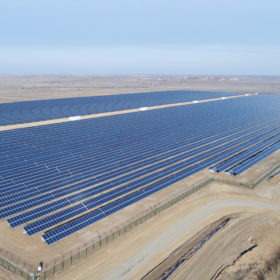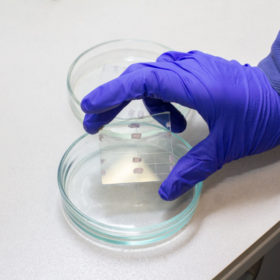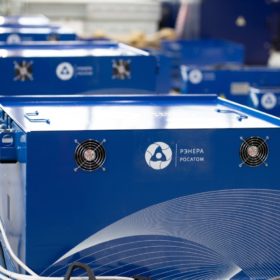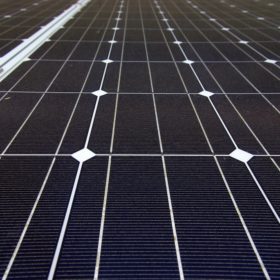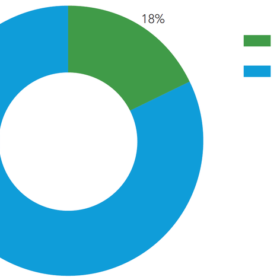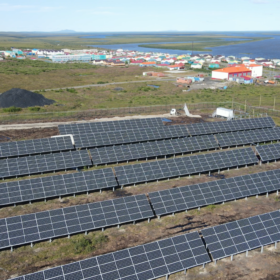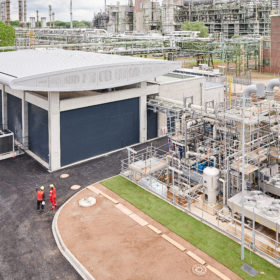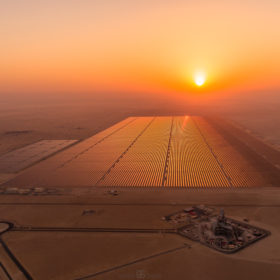Russia’s renewables auction concludes with lowest solar bid of $0.059/kWh
In the procurement exercise, the Russian energy regulator allocated 775 MW of PV capacity, 1,851 MW of wind power, and 96 MW of hydropower capacity. The auction concluded with an average price of RUB 5.18 ($0.070)/kWh.
Russian scientists achieve 21.1% efficiency in perovskite solar cell via Mie-resonant silicon nanoparticles
A Russian-Italian research group has developed resonant silicon nanoparticles that are claimed to improve the performance of perovskite solar cells. These particles serve as nanoantennae – they catch light and it resonates inside them, which amplifies the cell’s light absorption.
Rosatom identifies location for 3 GWh lithium-ion battery factory
Russian energy giant said its gigafactory will be located in Russia’s western exclave of Kaliningrad. The facility is expected to begin manufacturing activities in 2026.
Cooling PV panels with water and cotton mesh
Scientists in Russia have developed an active cooling technique that spreads water on both sides of the module and uses a cotton wick mesh to absorb and spread the water that comes on the rear side. The system is able to reduce significantly a module’s operating temperature and lead to an overall improvement of 30.3% in its output power.
‘The chance to reset with a green recovery has now been lost’
Norwegian consultancy DNV today published the latest of its annual surveys of the state of the energy transition and lamented the fact so very little has been achieved during the last five years. We are forging ahead into a world that will be 2.3C hotter this century, predicts the report.
Solar+storage in the Russian Arctic
Hevel Energo Servis has developed a new solar+storage project under Russia’s energy service scheme to help independent power producers to sell power to municipalities with diesel power plants via a competitive bidding scheme.
Plans for HJT gigafactory in Russia
The controlling shareholder of Russian PV manufacturer Hevel Solar says it has started construction on a gigafactory to manufacture solar ingots, wafers and heterojunction (HJT) cells in the Kaliningrad exclave of Russia, between Lithuania and Poland.
New tech may bring heterojunction solar cells based on p-type wafers closer to mass production
An Australian-Russian research group has developed a silicon heterojunction solar cell based on p-type gallium-doped wafers with an efficiency of 22.6% and an improved stability. The scientists are convinced that these wafers may become a mainstream solution for the SHJ segment within the next decade.
The Hydrogen Stream: Ineos to invest £25m in HydrogenOne fund as Shell fires up its 10 MW electrolyzer
Plus, the Norwegian government is set to devote €2.5 million into a joint venture trying to develop liquid organic hydrogen carrier solutions for shipping by the middle of the decade.
‘Low-cost renewable hydrogen may already be in reach’
If the three record-busting low solar price tariffs recorded in the Middle East in the past 18 months are to be believed, renewables-powered hydrogen in prime sites in the region could already compete with gas-plus-CCS production, according to IRENA. Has the Gulf discovered the new petrol?
